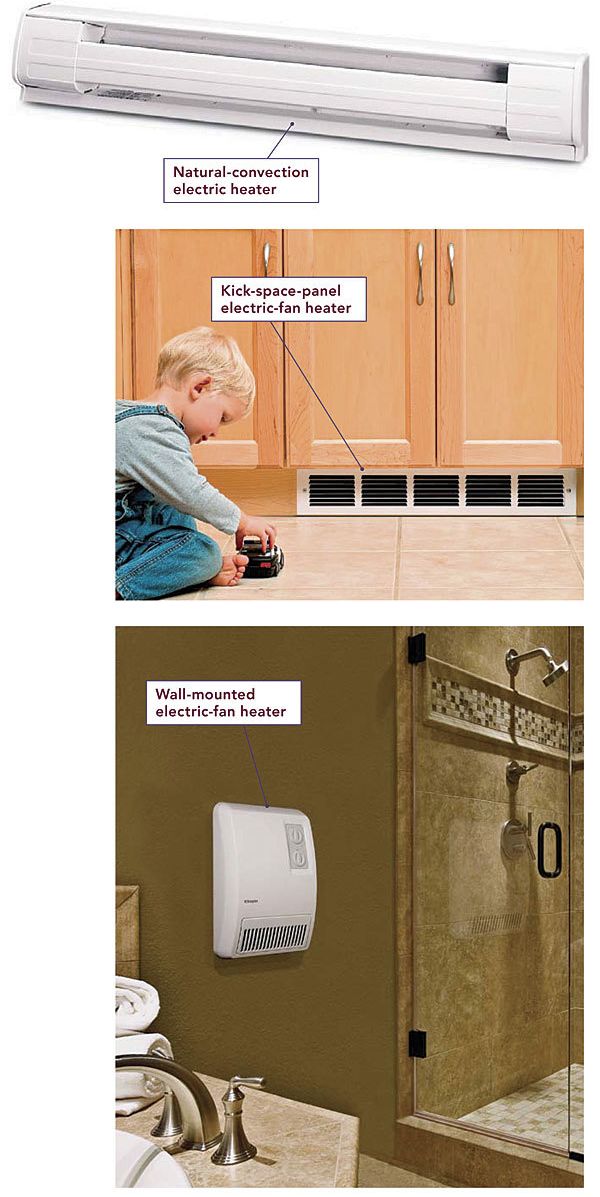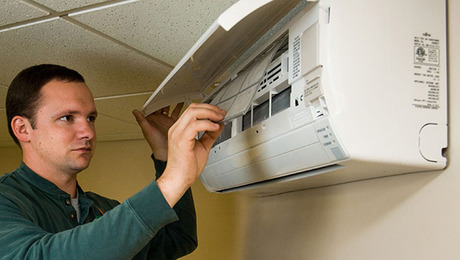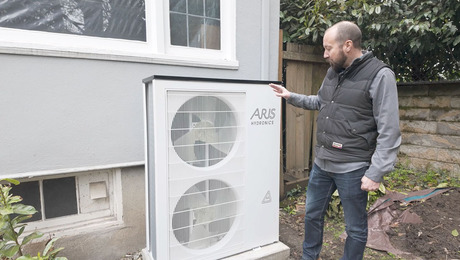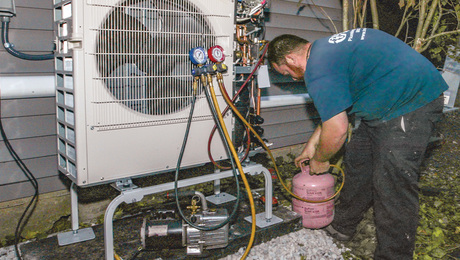Cost-Conscious Heating for Remodels
For remodeled spaces both large and small, stand-alone electric systems can be an affordable heating option.

Synopsis: Depending on added square footage, space for new ductwork, or the budget for the project, using the existing heating system may not be the most attractive option for a remodeled space. This article describes several ways a remodeled space may be heated with a stand-alone electric unit. Such units, which use either convection or radiant heat, are inexpensive and easy to install. Convection heaters are available with or without fans. Those with fans can be installed under a cabinet, on a wall, or overhead; those without fans usually are placed on the lower half of a wall, often at baseboard height. The most popular radiant heaters are mats that are anchored over the subfloor with latex-modified thinset cement and that work by heating the finished flooring. The author also describes towel bars and wall panels that produce limited amounts of radiant heat.
Sometimes the most enduring benefits of kitchen and bath remodels are the ones with little or no visual drama: the warm air coming from the kick-space heater at the base of a set of new cabinets, or the tile mats that silently generate radiant heat under the floor.
Heating tends to be forgotten amid the many other design decisions that go along with a remodel or addition. it’s not until the master bath has been finished that you realize how much colder the new tile floor feels than your old linoleum, or how chilly the kitchen feels after removing that run of baseboard heat to make room for extra cabinets.
In many cases, it makes sense to extend an existing forced-air or hydronic (hot water) heating system to condition a newly remodeled space. Depending on the added square footage of the new room, the space for new ductwork, or the budget of the project, however, using your existing heating system may not be the most attractive option.
The good news is that there are many stand-alone heating options designed to fit a wide variety of situations, and they don’t have to blow the budget for the whole job. Of the available options, electric heat generally involves the lowest up-front costs and simplest installations. You don’t need a boiler and circulation pump, and there are no supply and return ducts to worry about hiding. Spend just a few hundred dollars (though often much less) to purchase the device, plus whatever the electrician charges to install the wiring, and you’re up and running. Modern units go beyond baseboard heaters, too. In-floor, wall-mounted, and even dual-purpose towel warmers and heated mirrors make it easy to integrate electric heat into the design of a room.
Convection options aplenty
The variety of low-cost convection space heaters can seem downright bewildering. Options include forced-air (fan) heaters that can be installed under a cabinet, on a wall, or overhead; and natural-convection heaters that are mounted on the lower half of a wall, often at baseboard height. Fortunately, most of these heaters are similar in function: A heating element warms air, causing it to rise. As the warm air rises, it is replaced by cooler air, creating a natural loop that distributes the heat. Sometimes this process is accelerated with the help of a fan. Narrowing down the convection choices usually means reckoning with just a few conventional issues: weighing performance criteria such as noise and energy efficiency, matching the output of the device to the volume and configuration of space to be heated, and determining the best installation locations.
For more photos and details, click the View PDF button below:


























